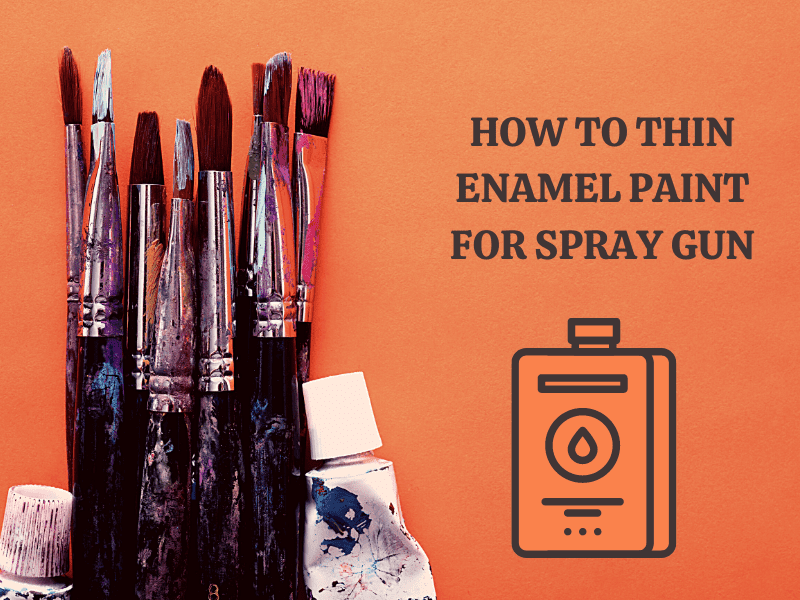Table of Contents
Why Does Enamel Paint Need to Be Thinned
Enamel paint differs from other types of paint because it has a higher viscosity (thickness). This makes it more difficult to spray from a spray gun, especially if it has a small nozzle. To solve this problem, you need to thin the enamel paint to reduce its viscosity and make it easier for an even layer of paint to be applied.
Thinning enamel paint also helps increase the coverage area—meaning it will go farther and cover larger surfaces with less product. Additionally, thinned enamel paint dries faster than non-thinned versions, decreasing potential splatter.
How to Thin Enamel Paint
Choosing the Paint Thinner
Enamel paint typically comes in either oil-based or water-based versions. The type of thinner best suited for each will depend on the viscosity and volume of the product used.
For oil-based enamel paints, mineral spirits are recommended for thinning purposes. They evaporate quickly, making them ideal for spraying on multiple layers without causing any build-up.
If you are working with water-based enamel paint, you can thin it by adding more water. You can also use a water-based paint thinner.
Measuring Out Amounts Properly
When thinning enamel paint for a spray gun, it’s essential to measure the amounts correctly. Paint that is too thick will clog the nozzle and create a mess, while paint that is too thin may not provide even coverage or quality results. To get the best results when spraying, measure out proper amounts of thinner and paint tailored specifically to the type of spray gun you use.
Using a measuring cup or syringe, measure out the proper amounts of thinner and enamel paint based on your spray gun’s manufacturer’s recommendations. Always refer to your manufacturer’s instructions to ensure you use the correct ratios for your specific equipment.
Mixing the Paint and Thinner
When mixing your enamel paint and thinner, stir gently with a wooden stirring stick until all the ingredients are thoroughly combined. Do not shake or whisk, as this could create air bubbles in your mixture that can cause clogs in your spray gun. Once everything is thoroughly combined, test it on a piece of scrap material before applying it to your project.
Proper Spraying Technique With Thinned Paint
Ensure that your spray gun is set up correctly and that the air pressure and fluid flow are within the recommended range. Depending on your gun type and nozzle size, you may also need to adjust for the enamel paint’s viscosity or thickness.
Start spraying in a sweeping motion from left to right using light but steady strokes. Pay extra attention to edges to avoid runs or sags – these usually form around corners or sharp angles due to enamel’s high viscosity. You can use this same pattern for successive coats of paint as well.
When finished painting, reduce the fluid control knob until all remaining paint has been completely released from any internal capillary tubes inside your gun’s body – leaving them filled with air instead of dried paint will extend its lifespan significantly.
Conclusion
In conclusion, proper thinning of enamel paint for spray gun application is critical for successful and consistent results. But by following the proper ratio of enamel to thinner, you can get the result you’re looking for. Once you have that figured out, you’ll be primed and ready to achieve an incredible spray painting finish every time. Happy spraying!
